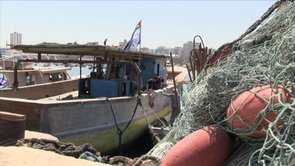Year: 2013
-
Video: Gaza Ark Project 2013
27th June 2013 | International Solidarity Movement, Gal·la | Gaza, Occupied Palestine Charlie Andreasson, a member of Ship to Gaza Sweden, explains the new Gaza Ark project of this year 2013. The several unsuccessful attempts to break the siege on Gaza, imposed by Israel, from the outside to the inside made the activists think about this project…
-
Martyr’s son arrested in Nablus early Monday morning
23rd June 2013 | International Solidarity Movement, Nablus team | Nablus, Occupied Palestine This Saturday, June 29 marks the 9th anniversary of the Israeli assassination of Naif Abu-Sharah, former resident of Nablus and leader of the al-Aqsa Martyrs’ Brigade until his death. But even though his death has long passed, Israeli authorities haven’t ceased collectively…
-
Saturdays under the settlements
25th June 2013 | International Solidarity Movement, Khalil team | Hebron, Occupied Palestine Saturday is supposed to be a holy day for the Jewish settlers of the illegal colonies in the West Bank; many don’t work, they don’t turn on electrical appliances, they don’t drive cars. But some of the violent and Zionist among them…


